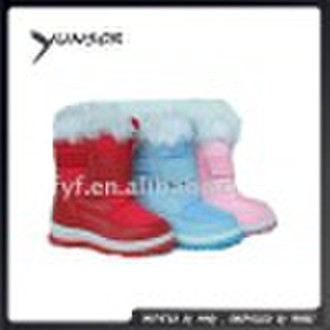雪靴子

Rosi Lo
联系人姓名
基本信息
| 出生地 | Zhejiang China (Mainland) |
|---|---|
| 牌子的名字 | YFYFAP |
| 模式的数量 | YFH135 |
| 性别问题 | 人 |
| 上材料 | 棉花纤维 |
| Outsole材料 | 贸易政策审查 |
| 类型 | 膝盖的靴子 |
| 风格 | 雪靴子 |
| 季节 | 冬天 |
Choose us , choose the best!!! Please click www.yfyfap.com.cn to view more information. We have thousands of fashionable casual or functional shoes to surprise you! Snow Boots are 53 Centuries Old Archaeologists calculate that Otzi, the iceman that hikers found in 1991 in the Alps between Austria and Italy, is at least 53 centuries old. He was wearing a primitive version of snow boots which were waterproof and wide with bearskin soles. The top panels were made of deer hide and the netting made of tree bark. He had stuffed soft grass around the foot and in the shoe and the grass worked like modern socks. Like Otzi, Stone Age people made their boots from animals hides and lined them with grass to keep their feet warm. As the years and the snow continued, Native Americans of North America perfected the art of making snow boots. Native American tribes including Cree, Ojibiwa, and Sioux used the same natural skins and furs that they used to make their clothing to design fur snow boots with unique bead patterns and colors. The evolution of snow boats kept pace with the evolution of the United States. As women acquired more rights in politics andfashion, their footwear became liberated as well. By February 1860, Godey's Lady's Book reported the popularity of thick walking boots for ladies instead of the thin slippers that restricted their movement. The worlds of the outdoors, sports, business, and the public arena opened up for women when they graduated from slippers to snow boots.
交货条款及包装
Packaging Detail: 12-60 prs in an export carton,as your request Delivery Detail: 50 Days After Confirmation
端口: Wenzhou
付款条款
Letter of credit
Telegraphic transfer
-
支付方式
我们接受:









